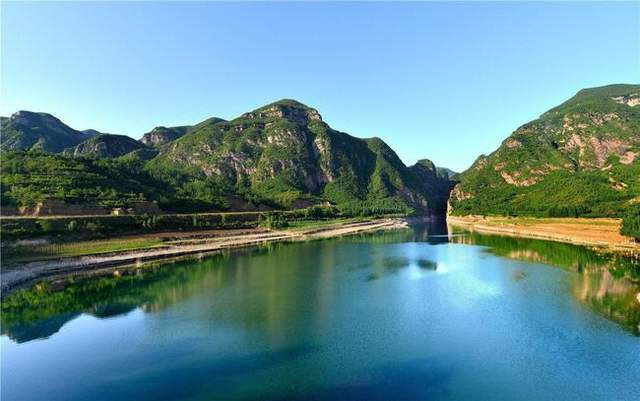The "14th Five-Year Plan" period is a critical period for China to promote the construction of ecological civilization, as well as a period to promote high-quality economic development with a high level of ecological protection, a window period to continue to fight the battle of pollution prevention and control, and a foundation period to achieve the ambitious goal of carbon neutrality and the construction of a beautiful China. As the world's largest country in terms of total carbon emissions, China's industry has not yet fully emerged from the dilemma of "high input, high consumption and high emission" development model, and ecological environmental protection is still facing multiple pressures such as tightening resource and energy constraints and continuous improvement in environmental quality. As a strategic emerging industry with the dual attributes of driving economic growth and addressing environmental issues, the energy conservation and environmental protection industry will become an important driving force to support China's structural reform on the supply side during the 14th Five-Year Plan period, and the scale of the industry will further expand and enter the fast lane of high-quality development.

In September 2020, at the United Nations General Assembly, China announced its ambitious goal of peaking CO2 emissions by 2030 and striving to achieve carbon neutrality by 2060. Optimizing the energy structure and industrial structure will be an important way to promote green and low-carbon industrial development during the 14th Five-Year Plan period. On the one hand, energy consumption will maintain a low growth rate and low incremental development trend. Coal chemical industry and other high carbon emission projects will accelerate the tightening of energy consumption per unit of industrial value added is expected to drop by more than 20%, clean energy will become the main body of incremental energy consumption. At present, China's solar energy, wind energy, water energy can be developed more than 10 billion kilowatts, 3.5 billion kilowatts, 600 million kilowatts, the supply is sufficient but the utilization rate is low and other issues are prominent. We expect that during the "14th Five-Year Plan" period, the research and development and application of energy storage technology will be accelerated to solve the key technologies of energy grid connection and energy consumption, laying the foundation for accelerating the optimization of energy structure. On the other hand, the upgrading of industrial structure will accelerate the pace of high-frequency and high-standard adjustment of energy structure. The Fifth Plenary Session of the 19th CPC Central Committee clearly put forward that the "14th Five-Year Plan" period will reduce carbon emissions intensity and support places with conditions to take the lead in reaching the peak of carbon emissions. The optimization of industrial structure with high economic efficiency and low energy consumption will become the focus of the 14th Five-Year Plan, and energy conservation and environmental protection, clean production, clean energy and other green industries will usher in a new round of development opportunities.
"Thirteenth Five-Year" period, China's green manufacturing system construction tasks are basically completed, but electrical and electronic, petrochemical, automobile manufacturing, machinery and equipment, iron and steel smelting and other high energy consumption, heavy pollution industry still exists in the product life cycle concept penetration rate is insufficient, green manufacturing system standards are not perfect, green manufacturing core links exist bottlenecks and so on. Problems. Therefore, strengthen the core key technology research and development, build a more complete green manufacturing technology system, will become the "14th Five-Year" period of China's green manufacturing system construction of key tasks. Further, key industry enterprises and industrial parks are still the main body of green manufacturing system construction in the "14th Five-Year Plan" period. In the process of creating green factories, improving the level of clean production technology, improving the effect of end-of-pipe treatment, enhancing the degree of resourcefulness and harmless utilization of pollutants, as well as in the process of creating green parks, increasing the proportion of renewable energy and energy ladder utilization, and improving the use of renewable energy. In the process of creating green factories, improving the level of clean production technology, improving the effect of end-of-pipe treatment, enhancing the degree of resourcefulness and harmless utilization of pollutants, and in the process of creating green parks, improving the proportion of renewable energy and energy gradient utilization, promoting the level of digitalization and intelligent management of parks will still be the key points and difficulties that need to be broken through in the "14th Five-Year Plan" period.

In recent years, the continuous innovation and breakthroughs in cutting-edge technologies such as artificial intelligence, new nano-materials, and big data have brought many opportunities for the development of technological innovation in energy conservation and environmental protection in China. In water treatment, for example, the synergistic integration of inter-industry means, such as targeted cultivation of efficient denitrification and phosphorus removal microbial strains and the adoption of anti-pollution separation membrane materials, has significantly improved the efficiency and effectiveness of water treatment. Through the integration with a new generation of information technology, but also gave birth to a new industry such as intelligent environmental protection, to solve the environment and pollution information comprehensive perception, high-speed transmission of environmental data, as well as emergency events intelligent decision-making and other traditional environmental protection work pain points, so that the application of scenarios continue to expand innovation. 2020 China's intelligent environmental protection market size is expected to reach 84 billion yuan, compared to the 2015 growth of 165%. During the "14th Five-Year Plan" period, breaking the application barriers between industries to achieve synergistic integration of multiple fields will become an important path to enhance the level of energy conservation and environmental protection technology, will also become an important way to optimize the structure of environmental protection equipment products, environmental protection enterprises to improve their core competitiveness. We expect that with the continuous innovation of technologies such as Internet of Things, cloud computing, remote sensing monitoring, geographic information systems (GIS), data mining and artificial intelligence, as well as the continued depth of synergistic integration between industries, new service models for energy conservation and environmental protection such as intelligent energy conservation and IOT will continue to emerge.
Trend 4: The potential of new environmental industries oriented to the function of epidemic prevention will be further released.
"During the 14th Five-Year Plan period, the following four epidemic-related fields will see qualitative changes and rapid development. For example, during the epidemic in Ganjingzi District, Dalian, an intelligent garbage sorting and disinfection pilot project will be carried out, which can reduce 14% of garbage unattended. Second, the development of hazardous waste treatment will be centralized, with the current generation and treatment capacity estimates, it is expected that by 2022, the annual generation of hazardous waste will reach 100 million tons, the treatment capacity gap of more than 20 million tons, including medical waste hazardous waste treatment capacity to improve urgently. Third, environmental emergency monitoring will develop to precision, environmental monitoring market size in 2020 grew 25% year-on-year, much higher than the average growth rate of 16% in the previous three years, it is expected that by 2025 the market size of precision environmental monitoring equipment will reach 240 billion yuan. Fourth, indoor air purification will develop to specialization, it is expected that by 2025, the market size of the indoor air purification industry will reach 200 billion yuan, of which, the market size of high-precision specialized purification equipment for medical places will reach 60 billion yuan.

Trend 5: Industry clustering continues to strengthen, "specialized and special" into the direction of development of small and medium-sized enterprises.
At present, the concentration of China's energy conservation and environmental protection industry than in Europe and the United States and other developed countries there is still a gap. According to statistics, the number of enterprises with revenue of more than 10 billion yuan, the United States has 26, China has 10; solid waste industry CR3 enterprise market share, the United States reached 49.6%, China only 7.8%; water treatment industry CR3 enterprise market share, the United States reached 17.2%, China only 8.1%. China's energy conservation and environmental protection enterprises are mainly small and medium-sized enterprises, on the one hand, the technology, products and services integrated energy conservation and environmental protection business integrated service model can quickly enhance the technical strength and capital operation capabilities of enterprises to promote the standard development of small and medium-sized enterprises in the form of group cooperation to improve the competitiveness of China's large enterprises in the global market; on the other hand, we can not ignore the fact that 90% of the country's energy conservation and environmental protection enterprises are On the other hand, we cannot ignore the reality that 90% of energy-saving and environmental protection enterprises are SMEs. During the "14th Five-Year Plan" period, the concentration of the industry will be further enhanced, the overall competitiveness of the industry will be improved, and SMEs with core technologies will tend to develop in the direction of "profession and specialization", and the specialized production and collaboration capabilities of SMEs will be further improved. The combination of integration and differentiation will contribute to the benign development of China's energy-saving and environmental protection industry.